Things to Consider When Using Lithium Batteries in Counterbalanced Forklifts
Using lithium batteries in counterbalanced forklifts is revolutionizing material handling with increased efficiency, longer lifespan, and lower maintenance costs. However, to get the most out of these benefits, you need to understand the unique things to consider when using lithium batteries in counterbalanced forklifts. This detailed guide will help you make informed choices, avoid common pitfalls, and ensure optimal safety and performance for your warehouse or logistics operations. Whether you're upgrading your fleet or buying new equipment, knowing how counterbalanced forklifts interact with lithium battery technology is essential for long-term success.
- Key Safety Considerations for Counterbalanced Forklifts Using Lithium Batteries
- Battery Management Systems in Counterbalanced Forklifts
- Charging Strategies for Counterbalanced Forklifts with Lithium Batteries
- Environmental Conditions for Counterbalanced Forklifts Using Lithium Batteries
- Cost Considerations for Counterbalanced Forklifts Switching to Lithium Batteries
- Regulatory and Compliance Factors for Counterbalanced Forklifts with Lithium Batteries
- Operator Training Requirements for Counterbalanced Forklifts with Lithium Batteries
- Fleet Management Strategies for Counterbalanced Forklifts with Lithium Batteries
- Recycling and End-of-Life Considerations for Counterbalanced Forklifts with Lithium Batteries
- Common Mistakes to Avoid with Counterbalanced Forklifts Using Lithium Batteries
- Advantages of Lithium Batteries in Counterbalanced Forklifts
- Future Trends for Counterbalanced Forklifts with Lithium Batteries
- Making the Most of Lithium Batteries in Counterbalanced Forklifts
Why Lithium Batteries Are Changing Counterbalanced Forklifts
The first thing to understand is why lithium batteries are so appealing in counterbalanced forklifts. Compared to traditional lead-acid batteries, lithium-ion cells deliver:
Faster charging times
Zero maintenance (no watering)
Higher energy density
Longer lifespan (up to 3–4x)
Consistent voltage delivery
These advantages translate to improved uptime, reduced total cost of ownership, and better operational efficiency for businesses using counterbalanced forklifts in warehouses, distribution centers, and manufacturing facilities.
Key Safety Considerations for Counterbalanced Forklifts Using Lithium Batteries
Safety is a top priority in any industrial environment, and integrating lithium-ion batteries into counterbalanced forklifts brings specific safety factors you cannot ignore.
Thermal Management and Fire Risk
Lithium batteries can overheat if poorly designed or improperly charged. You should:
Choose batteries with built-in BMS (Battery Management System) for temperature control
Ensure chargers are compatible and high quality
Store and operate in well-ventilated areas to dissipate heat
These measures help minimize fire risk and ensure safe operation for counterbalanced forklifts.
Charging Infrastructure
Unlike lead-acid batteries, which often require designated rooms for ventilation, lithium batteries can be charged at point-of-use. However:
Ensure your facility’s electrical systems can handle high charging currents
Train operators on safe plug-in and disconnect procedures
Avoid overloading circuits with too many simultaneous chargers
Proper planning ensures that counterbalanced forklifts remain safe and reliable during charging cycles.
Emergency Response Training
Operators and maintenance personnel must know:
How to identify overheating or damage
Proper shut-off procedures
Steps to contain or suppress a thermal runaway event
Having a lithium-specific emergency plan is essential for counterbalanced forklifts in high-volume operations.
>>See also technical challenges of using lithium batteries in counterbalanced forklifts
Battery Management Systems in Counterbalanced Forklifts
A sophisticated Battery Management System (BMS) is non-negotiable for lithium batteries in counterbalanced forklifts. The BMS is the brain of the battery, providing:
Cell balancing
Overcharge/overdischarge protection
Temperature monitoring
Fault diagnostics and alerts
Importance of Quality BMS
Always select reputable battery suppliers who provide industrial-grade BMS units. A cheap or poorly designed BMS can fail, leading to catastrophic damage or safety hazards in counterbalanced forklifts.
Integrating BMS Data
Modern counterbalanced forklifts may integrate BMS data into fleet management systems. This enables:
Remote monitoring of battery health
Predictive maintenance scheduling
Optimized charging strategies
Such integration maximizes ROI on lithium batteries in counterbalanced forklifts.
Charging Strategies for Counterbalanced Forklifts with Lithium Batteries
How you charge lithium batteries matters as much as which battery you choose.
Opportunity Charging
One of the biggest advantages for counterbalanced forklifts is opportunity charging:
Quick top-ups during breaks
No memory effect
Maintains high uptime
This can eliminate the need for spare batteries or battery swapping rooms, freeing warehouse space and lowering labor costs.
Avoiding Overcharging
Even with BMS protection, it’s critical to:
Use manufacturer-recommended chargers
Avoid bypassing safety interlocks
Train staff to follow charging SOPs
Reliable charging practices extend battery life and keep counterbalanced forklifts operational.
Environmental Conditions for Counterbalanced Forklifts Using Lithium Batteries
Counterbalanced forklifts often work in demanding environments. Lithium batteries are sensitive to extreme conditions.
Temperature Sensitivity
Extreme cold can reduce capacity and charging ability
High heat accelerates degradation
Solutions include:
Heated battery enclosures
Climate-controlled storage areas
Scheduling work to avoid temperature extremes
Moisture and Corrosion Risks
While lithium batteries are sealed, electronics and connectors remain vulnerable:
Keep charging areas dry
Inspect connectors for corrosion
Use IP-rated enclosures in wet environments
Cost Considerations for Counterbalanced Forklifts Switching to Lithium Batteries
Upfront costs for lithium batteries in counterbalanced forklifts can be 2–3x lead-acid prices. However, TCO (Total Cost of Ownership) is usually lower.
Longer Lifespan
Lithium batteries often last 3000+ cycles vs. 500–1500 for lead-acid.
Fewer replacements
Less downtime
Lower disposal costs
Reduced Maintenance Costs
Lithium batteries don’t require:
Watering
Acid cleaning
Ventilation systems
This reduces labor costs and simplifies fleet operations for counterbalanced forklifts.
Regulatory and Compliance Factors for Counterbalanced Forklifts with Lithium Batteries
Operators must comply with safety regulations when using lithium technology in counterbalanced forklifts.
Hazardous Materials Rules
Transporting lithium batteries can involve:
UN38.3 testing compliance
Proper packaging and labeling
Carrier acceptance procedures
Workplace Safety Standards
Ensure compliance with:
OSHA guidelines
Local fire codes
Electrical safety regulations for chargers
Being proactive avoids fines and ensures safe operation of counterbalanced forklifts.
Operator Training Requirements for Counterbalanced Forklifts with Lithium Batteries
Lithium technology introduces new training needs.
Charging and Handling
Proper plug/unplug procedures
Recognizing battery warnings
Reporting faults immediately
Safety Protocols
Evacuation procedures in thermal runaway
Fire extinguisher use (Class D where appropriate)
Emergency shut-off knowledge
Properly trained operators reduce risk and ensure counterbalanced forklifts remain reliable.
Fleet Management Strategies for Counterbalanced Forklifts with Lithium Batteries
Switching to lithium opens new fleet management opportunities for counterbalanced forklifts.
Data-Driven Maintenance
Use telematics to:
Monitor battery health
Track charging patterns
Schedule proactive service
Right-Sizing the Fleet
With opportunity charging and longer runtimes:
Fewer forklifts may be needed
Less downtime between shifts
Better ROI on capital investments
Recycling and End-of-Life Considerations for Counterbalanced Forklifts with Lithium Batteries
End-of-life planning is essential for sustainability and compliance.
Recycling Programs
Many suppliers offer take-back programs
Specialized recyclers recover valuable materials
Avoid landfilling hazardous waste
Environmental Impact
Reduced acid spills vs. lead-acid
Lower CO2 footprint over lifecycle
Supports corporate sustainability goals
Common Mistakes to Avoid with Counterbalanced Forklifts Using Lithium Batteries
Even experienced fleet managers can make mistakes when transitioning.
Choosing the Wrong Battery
Under-sizing capacity
Incompatible voltage
Low-quality BMS
Always work with trusted suppliers who understand counterbalanced forklifts.
Ignoring Charging Infrastructure
Underpowered circuits
No standardized connectors
Poorly placed charging points
Investing in infrastructure pays off in safety and efficiency for counterbalanced forklifts.
Skipping Training
Assuming lithium needs no training
Overlooking emergency response
Ignoring maintenance alerts
Make lithium battery training part of your standard forklift operator certification.
>>See also advantages of using lithium batteries in forklifts
Advantages of Lithium Batteries in Counterbalanced Forklifts
It’s important to emphasize why you’d make the switch:
Faster charging keeps counterbalanced forklifts in action
No maintenance reduces labor costs
Long lifespan lowers total cost of ownership
Cleaner operation improves safety and sustainability
Better performance under heavy loads
When managed properly, lithium technology delivers big value for counterbalanced forklifts.
Future Trends for Counterbalanced Forklifts with Lithium Batteries
Lithium battery adoption in counterbalanced forklifts is just the beginning.
Solid-State Batteries
Even higher energy density
Improved safety profile
Longer lifespans
Wireless Charging
Eliminates cables
Improves safety in busy warehouses
Reduces charging downtime
AI and Telematics
Predictive maintenance
Load optimization
Energy management integration
Being aware of these trends helps you future-proof your counterbalanced forklifts investment.
Making the Most of Lithium Batteries in Counterbalanced Forklifts
In the first 100 words, we talked about why counterbalanced forklifts benefit so much from lithium batteries. Now, in these final 100 words, let’s reinforce the point: adopting lithium technology in counterbalanced forklifts brings significant advantages, but only if you carefully plan for safety, charging, training, and compliance. By understanding the unique requirements of lithium batteries, investing in quality equipment and infrastructure, and educating your team, you can maximize uptime, reduce costs, and improve workplace safety. Don’t treat lithium as a drop-in replacement—treat it as a transformative technology that can take your counterbalanced forklifts fleet to the next level.

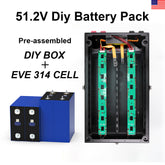

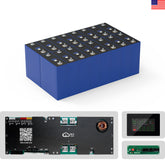

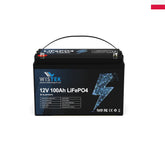
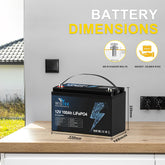

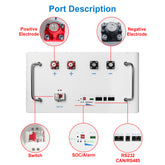
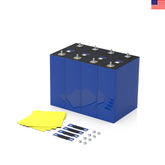
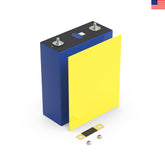
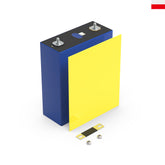

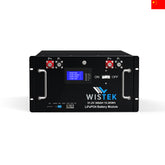
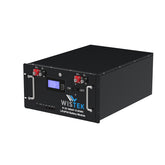
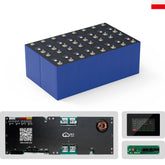








Leave a comment
All blog comments are checked prior to publishing